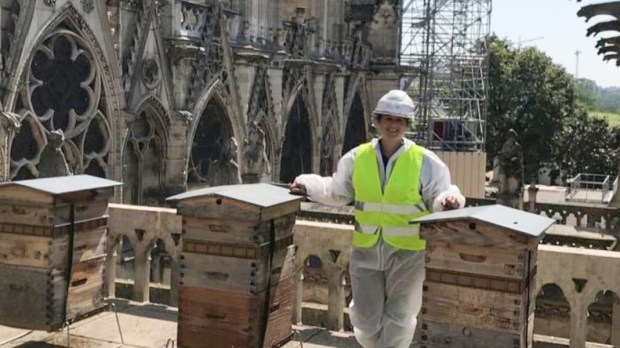When the roof of the Cathedral of Notre Dame went up in a horrific fire last April, Parisians—and the world—watched to see if the 800-year-old church would survive.
A few Parisians worried in particular about some little-known residents of Notre Dame’s upper reaches.
Finally, as engineers and technicians continue planning the rebuilding of Notre Dame, it has become clear that those denizens of the church’s roof—thousands of honey bees—not only survived but continuing to do what they do best.
“The bees of Notre Dame, whose escape from the inferno seemed almost miraculous, are thriving and conserving their energy ready to produce honey this summer, just as they have every year since they took up residence on the sacristy roof in 2013,” the Guardian reported. “Nearly 10 months after the Paris cathedral was ravaged by fire, the three colonies are healthier than ever, according to their beekeeper.”
Sibyle Moulin, who looks after the hives, retrieved 66 kilos of honey from the three hives last July. She recently visited them for the first time in six months and told the British daily that the 30,000-45,000 bees on Notre Dame’s roof are absolutely fine. This in spite of being in the vicinity of the fire, where temperatures were estimated to have reached as much as 1,470 degrees Fahrenheit.
But obviously they were not close enough to the conflagration, as Moulin and others found no melted wax on the roof.
“There’s nothing wrong with them at all. The behavior of the colonies is perfectly normal,” she said. “They’re not very active at this time of the year, but that’s how it should be. They seem fine.”
The hives are on the sacristy roof on the south side of the cathedral and approximately 98 feet below the main roof. The severely damaged cathedral stone is still unstable and there is a risk from lead particles from the roof that was turned into dust in the blaze. But Moulin has plans to keep monitoring the beehives and collect more honey in a few months.

